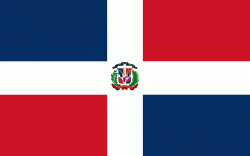San Cristóbal is a province in the southern region of Dominican Republic, located west of the capital Santo Domingo. With approximately 642,000 inhabitants, it is the fourth most populated province in the country, only behind Santo Domingo, Santiago and the National District. It borders the provinces Monseñor Nouel (north), Monte Plata (northeast), Santo Domingo (east), Peravia (west) and San José de Ocoa (northwest). The Caribbean Sea borders the province to the south. The provincial capital is the city of San Cristóbal.
It was originally named Trujillo after the dictator Rafael Leónidas Trujillo, taking its present name after his assassination in 1961. It included what is now Monte Plata Province until 1992. The provincial capital is San Cristóbal.
San Cristóbal is located in a valley surrounded by hills. Its climate is tropical with frequent rains, temperatures can fluctuate often. Foothills of the Cordillera Central are occupying a large part of the province, especially in the northwest. In addition there are other small elevations to the East and South (for example, the Lomas de Duveaux, south of Yaguate). The main rivers in the province are the Haina River, which constitutes the eastern limit of the province; the Nizao, which forms the border with the Peravia province, and the Nigua. Other rivers are Mana, Yubaso (or Blanco), La Toma and the Itabo, Sainaguá and Najayo streams.


















